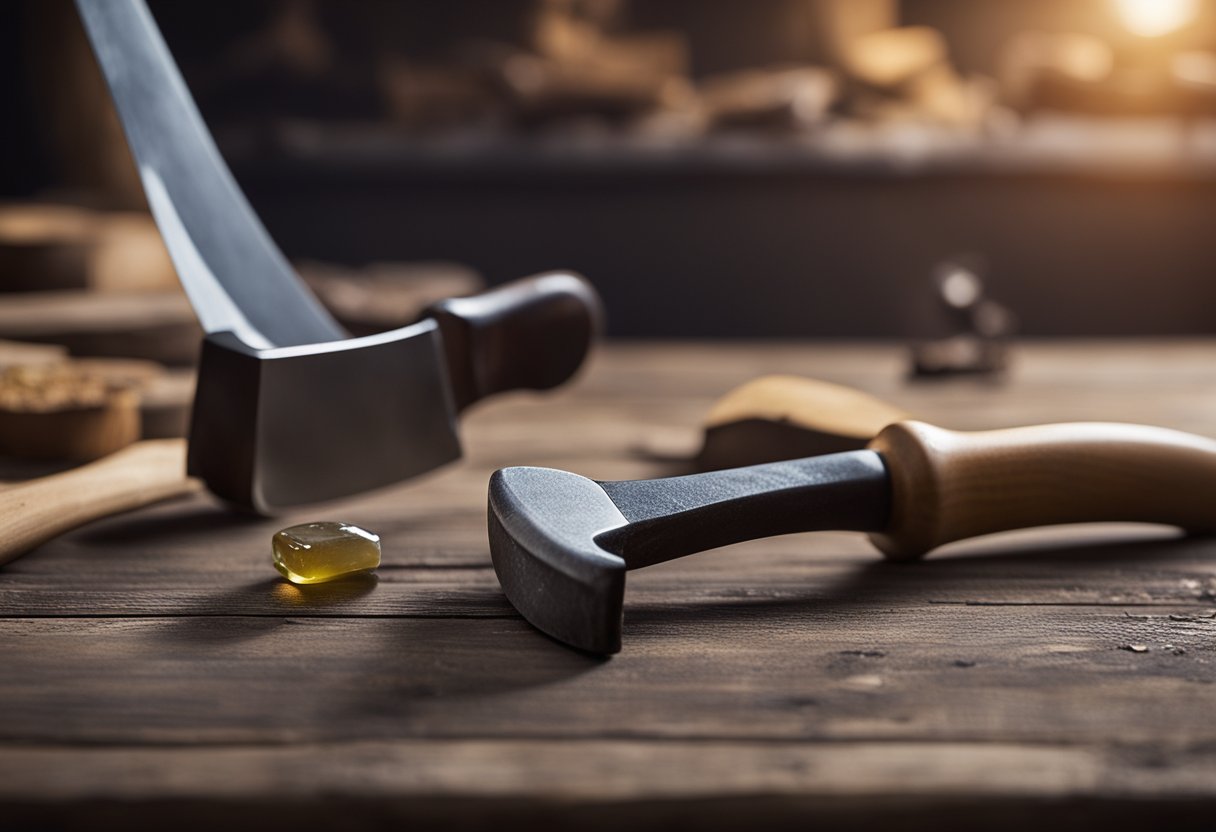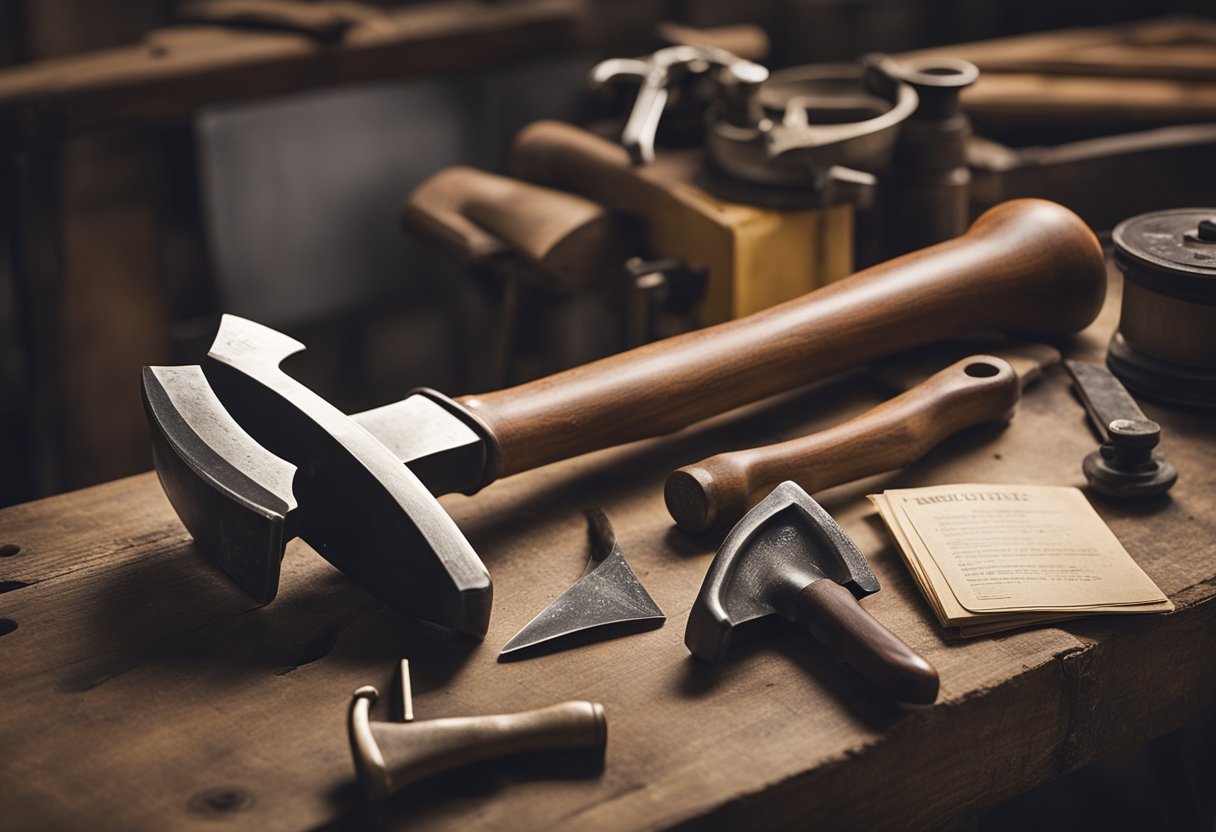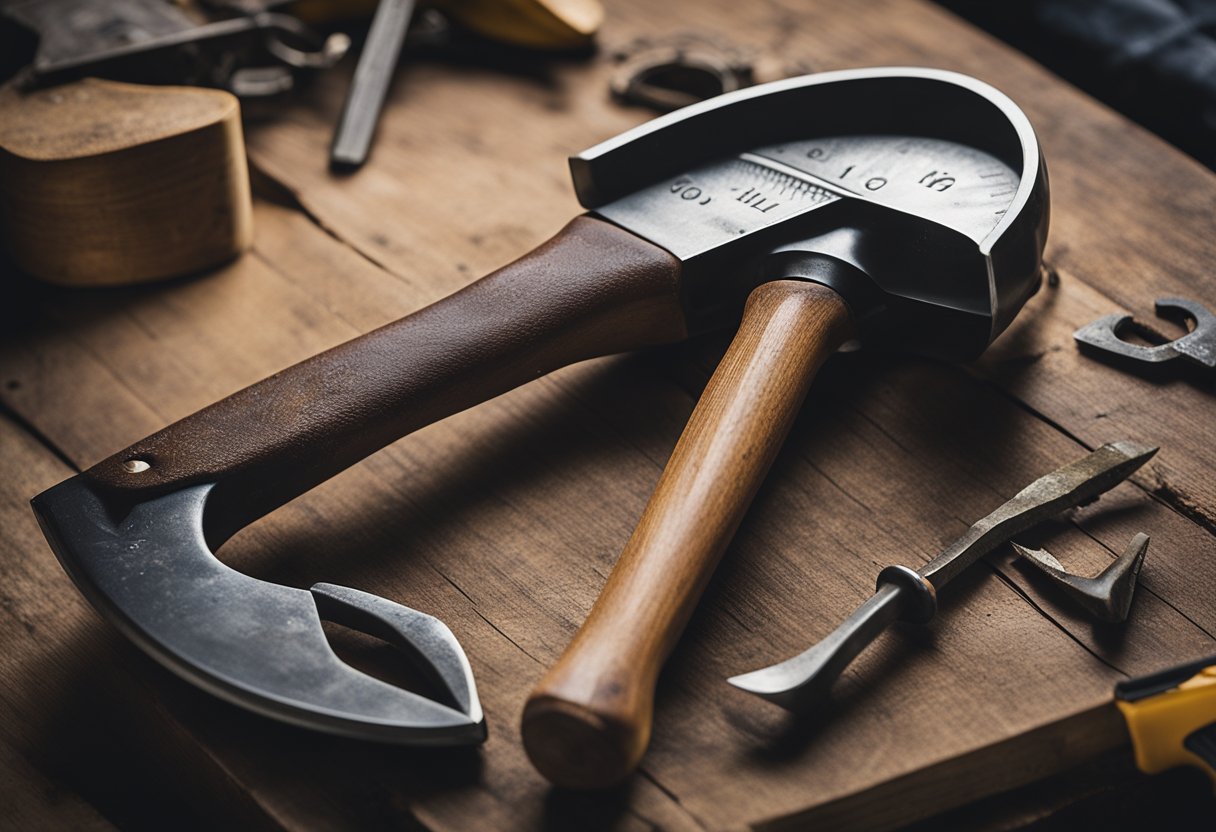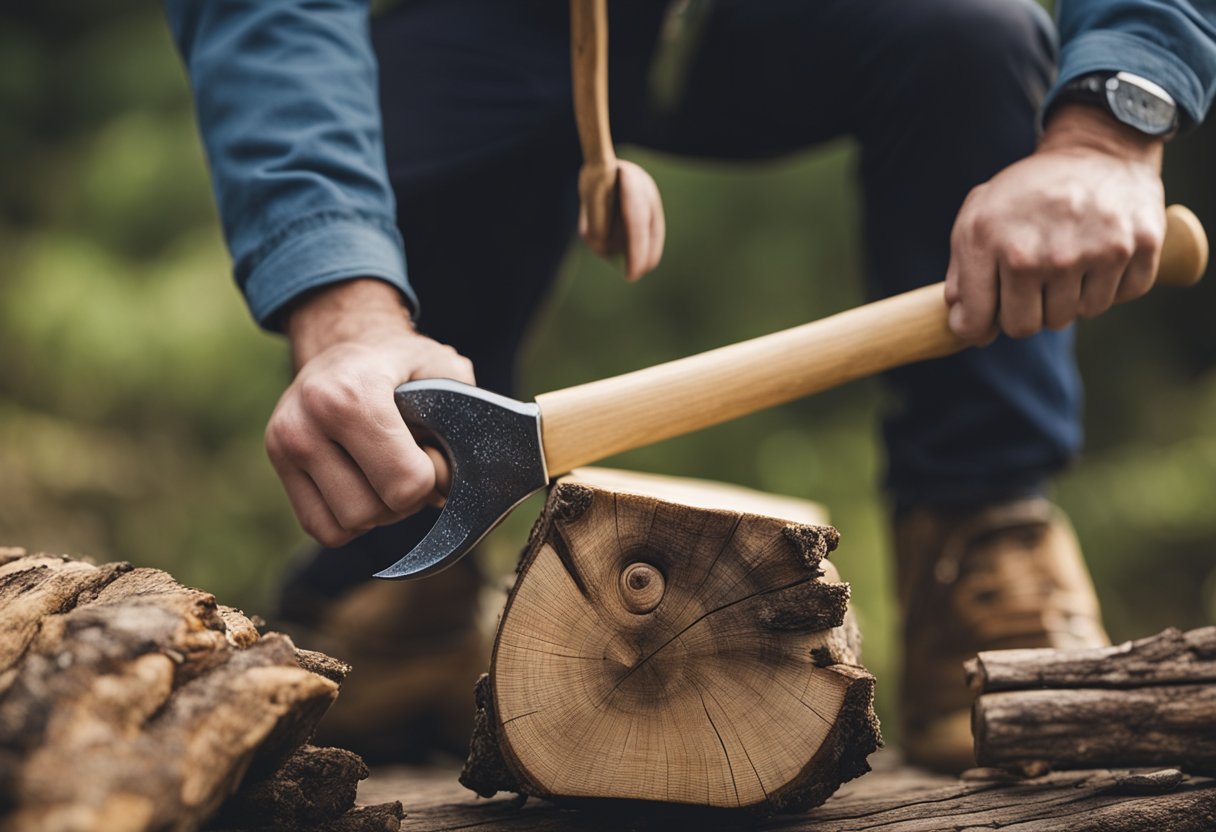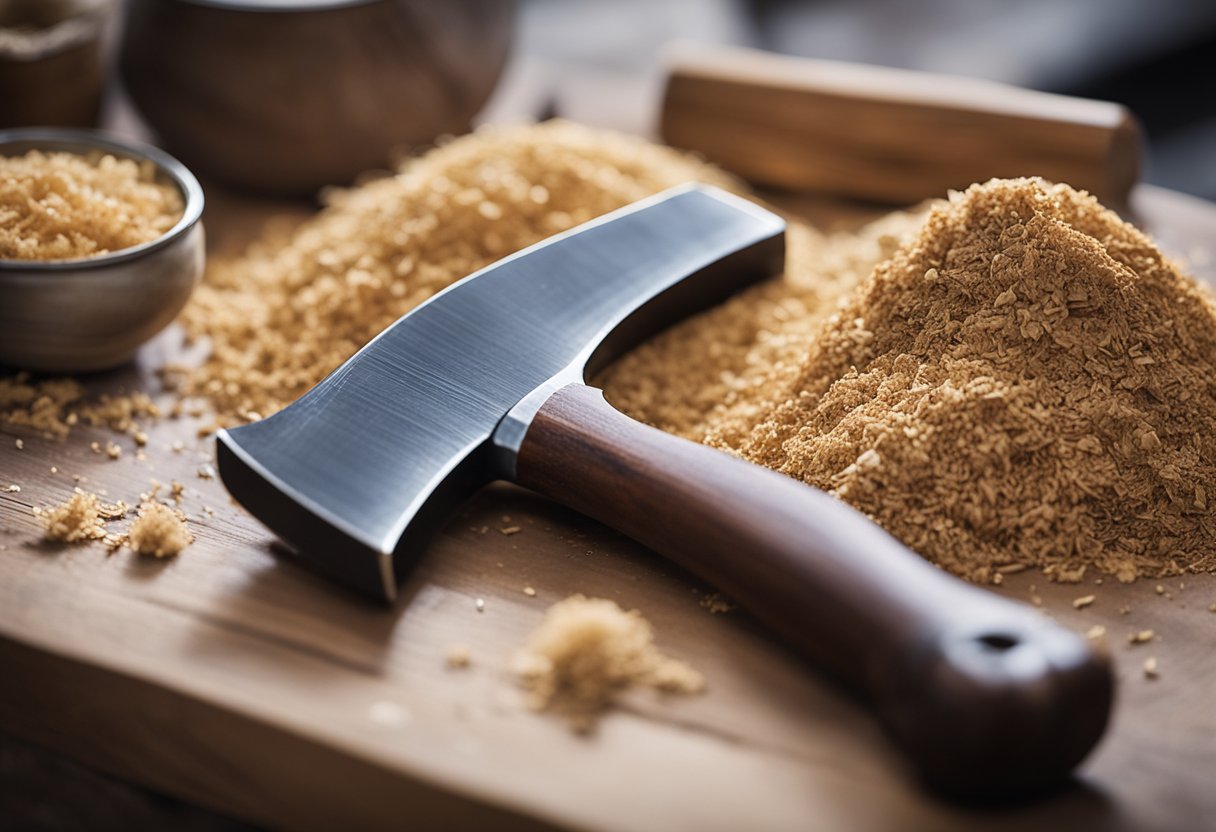When it comes to vintage tools, there’s something special about owning and using an old plumb axe. These axes were made by the Plumb company, which was founded in 1869 and produced high-quality tools for over a century. Dating a plumb axe can be a bit tricky, but with some knowledge and attention to detail, you can unlock the secrets of these vintage blades.
Understanding Plumb Axes
Before we dive into dating a plumb axe, it’s important to understand what makes these tools so special. Plumb axes were known for their high quality and durability, and they were used by everyone from farmers and loggers to firefighters and soldiers. The company produced a wide range of axes, from small hatchets to large felling axes, and each one was crafted with care and precision.
History of Plumb Axes
Plumb axes have a rich history that dates back over a century. The company was founded in Philadelphia in 1869 by Charles Plumb, and it quickly gained a reputation for producing high-quality tools. Over the years, Plumb axes were used by everyone from farmers and loggers to firefighters and soldiers. Today, these vintage tools are highly sought after by collectors and enthusiasts alike.
Key Takeaways
- Plumb axes were known for their high quality and durability.
- The Plumb company was founded in 1869 and produced high-quality tools for over a century.
- Plumb axes have a rich history that dates back over a century.
Understanding Plumb Axes
https://www.youtube.com/watch?v=zpbXJbBl4Ig&embed=true
As a tool enthusiast, I have always been fascinated by the history and craftsmanship of vintage axes. Plumb axes are among the most sought-after vintage axes, and for good reason. They are known for their quality, durability, and unique design. In this section, I will provide an overview of plumb axes and what makes them special.
Plumb Axes: A Brief History
Plumb axes were manufactured by the Plumb Tool Company, which was founded in Philadelphia in 1869. The company was known for its high-quality tools, including hammers, chisels, and of course, axes. Plumb axes were particularly popular among loggers and carpenters, who relied on them for their precision and strength. The Plumb Tool Company was acquired by the Cooper Group in 1971, and production of Plumb axes ceased in the early 1980s.
What Makes Plumb Axes Unique
Plumb axes are known for their distinctive design, which features a concave blade and a convex edge. This design allowed for greater control and precision when cutting, making Plumb axes ideal for carpentry and other fine work. Plumb axes were also known for their high-quality steel, which was carefully tempered and hardened to ensure durability and sharpness.
Identifying Plumb Axes
If you are interested in purchasing or restoring a Plumb axe, it is important to be able to identify it. Plumb axes were typically marked with the company’s trademark, which featured the word “Plumb” in script lettering. The trademark was often accompanied by a date or a patent number, which can help you determine the age of the axe. Some Plumb axes also featured a decal or a metallic foil label, which can also help with identification.
In conclusion, Plumb axes are a fascinating and unique part of tool history. Their distinctive design, high-quality steel, and precise craftsmanship make them highly sought-after among tool enthusiasts. By understanding the history and design of Plumb axes, you can better appreciate their value and make informed decisions when purchasing or restoring them.
History of Plumb Axes
As a collector or restorer of plumb axes, it is essential to know the history of the manufacturer, the Plumb Tool Company. The Plumb Tool Company was established in 1869 and was located in Philadelphia, Pennsylvania. The company was founded by Charles Plumb and began producing high-quality axes and other hand tools. The Plumb Tool Company was known for its high-quality tools, and their axes were particularly popular.
During the Viking Age, axes were used as weapons and tools. The design of the axe evolved over time, and by the 19th century, the axe had become an indispensable tool for farmers, loggers, and carpenters. The Plumb Tool Company was one of the leading manufacturers of axes during this time.
The Plumb Tool Company also produced axes for the military during World War I and World War II. These axes were designed to be lightweight and versatile, and they were used for a variety of tasks, including chopping wood, digging trenches, and building fortifications.
In the early 20th century, the Plumb Tool Company was acquired by the Cooper Group, and the company continued to produce high-quality axes until the 1960s. Today, plumb axes are highly sought after by collectors, and they are valued for their quality and craftsmanship.
In summary, the Plumb Tool Company has a rich history of producing high-quality axes and other hand tools. Their axes were popular among farmers, loggers, carpenters, and the military. Today, plumb axes are highly valued by collectors, and their history and craftsmanship make them a valuable addition to any collection.
Identifying a Plumb Axe
https://www.youtube.com/watch?v=x6zuHkAxa5E&embed=true
If you’re interested in vintage axes, it’s important to know how to identify a Plumb axe. Plumb axes were made by the Plumb Tool Company, which was founded in 1869 and produced axes until the 1960s. Here are some tips to help you recognize a Plumb axe:
Recognizing the Head
The head of a Plumb axe is usually made of metal, and it can be used to help identify the age of the axe. Older Plumb axes may have a more ornate design, while newer axes may have a simpler design. Look for the Plumb trademark, which is usually located near the eye of the axe head. The trademark may include the words “Plumb” or “Plumb Tool Company,” as well as a picture of a plumb bob.
Examining the Handle
The handle of a Plumb axe is usually made of wood, and it can also be used to help identify the age of the axe. Older Plumb axes may have a handle made of hickory or another type of hardwood, while newer axes may have a handle made of a cheaper type of wood. Look for signs of wear on the handle, such as dents or scratches, which can indicate the age of the axe.
Looking for Manufacturer’s Marks
Plumb axes usually have a manufacturer’s mark stamped on the head of the axe. This mark can be used to help identify the age of the axe. Look for the words “Plumb” or “Plumb Tool Company,” as well as a trademark or patent number. Older Plumb axes may have a patent number that includes the year the patent was granted. In addition, some Plumb axes may have a Permabond label on the handle, which can also help identify the age of the axe.
By using these tips, you can confidently identify a Plumb axe and determine its age. Keep in mind that while Plumb axes are highly sought after by collectors, they were also used for practical purposes and may show signs of wear and use.
Determining the Age of a Plumb Axe
As a collector or restorer of plumb axes, it is essential to know the age of the tool to make informed decisions about its value and authenticity. Here are some ways to determine the age of a plumb axe:
Maker’s Mark
Most plumb axes have a maker’s mark stamped on the head, which can be used to date the axe. Most makers kept records of when they made their products, and the maker’s mark will usually contain the company name or logo, as well as the date or year. You can use online resources to identify the maker’s mark and determine the age of the axe.
Style of the Axe Head
The style of the axe head can also provide clues about the age of the plumb axe. For example, older plumb axes may have a broader and more curved bit than modern axes. The style of the handle can also provide some indication of age, as older axes may have a more rustic and handcrafted look.
Carbon Dating
Carbon dating is a scientific method used to determine the age of an object containing organic material. While it is not commonly used to date plumb axes, it is possible to use this method on the wooden handle of an axe. However, carbon dating can be expensive and time-consuming, and it may not be practical for most collectors or restorers.
In conclusion, there are several ways to determine the age of a plumb axe, including the maker’s mark, the style of the axe head, and carbon dating. By using these methods, you can accurately date your plumb axe and make informed decisions about its value and authenticity.
Caring for Your Plumb Axe
https://www.youtube.com/watch?v=BfsF_d3o83E&embed=true
As a proud owner of a Plumb axe, it is essential to take care of it to ensure it lasts for generations. Proper care will also help maintain its quality and value. Here are some tips on how to care for your Plumb axe:
1. Keep the Axe Head Clean
The axe head is the most crucial part of the Plumb axe. It is made of metal and can rust if not taken care of properly. To keep it clean, wipe it with a dry cloth after use. If there is any dirt or debris stuck on it, use a wire brush or sandpaper to remove it. It is also recommended to oil the axe head occasionally to prevent rust.
2. Store the Axe in a Dry Place
Moisture can damage the wood handle of the Plumb axe. Therefore, it is essential to store it in a dry place. Avoid storing it in a damp area or leaving it outside. If the handle gets wet, wipe it dry with a cloth.
3. Sharpen the Axe Regularly
A dull axe is not only ineffective but also dangerous to use. Therefore, it is crucial to sharpen the Plumb axe regularly. You can use a sharpening stone or file to sharpen the blade. Make sure to maintain the original bevel angle of the blade while sharpening.
4. Replace the Handle if Needed
The handle of the Plumb axe is made of wood and can crack or split over time. If this happens, it is recommended to replace the handle. You can purchase a replacement handle or make one yourself. Make sure to choose a high-quality wood that is strong and durable.
By following these tips, you can ensure that your Plumb axe remains in excellent condition for years to come. Remember to always handle the axe with care and respect, and it will serve you well.
Sharing Your Plumb Axe Experience
If you’re passionate about your plumb axe and want to share your experience with others, there are several ways to do so. Here are a few options to consider:
Using Social Media
Social media platforms such as Facebook, Twitter, and Instagram can be great places to share photos and stories about your plumb axe. You can join groups and communities dedicated to vintage tools and axes, and connect with other enthusiasts. By sharing your knowledge and experience, you can help others learn more about plumb axes and their history.
Blogging About Your Plumb Axe
Creating a blog is another great way to share your plumb axe experience. You can write about your collection, restoration projects, and any interesting stories or facts you’ve learned about plumb axes. By doing so, you can help others who are interested in the same topic, and build a community of like-minded individuals.
Whether you choose to use social media or create a blog, it’s important to remember that advertising and self-promotion should not be the primary focus. Instead, focus on sharing your knowledge and experience, and helping others who are interested in plumb axes. By doing so, you can build a strong community of enthusiasts who share your passion for vintage tools and axes.
Buying and Selling Plumb Axes
When it comes to buying and selling Plumb axes, there are a few things to keep in mind. First and foremost, quality is key. Plumb axes are known for their durability and reliability, so it’s important to make sure that any axe you’re considering purchasing is in good condition. Look for signs of wear and tear, such as cracks or chips in the blade, and make sure that the handle is securely attached.
Experience is also important when it comes to buying and selling Plumb axes. If you’re new to the world of vintage axes, it’s a good idea to do some research and get a sense of what to look for. You may also want to consider working with an experienced dealer or collector who can help guide you through the process.
When it comes to selling a Plumb axe, advertising is key. There are a number of online marketplaces and forums where you can list your axe for sale, but it’s important to make sure that your listing is clear and informative. Be sure to include details about the condition of the axe, as well as any other relevant information such as its age or rarity.
Press can also be a valuable tool when it comes to buying and selling Plumb axes. Look for articles or reviews about Plumb axes in vintage tool or woodworking publications, as these can help establish the value and desirability of your axe.
Finally, it’s important to be aware of fire safety when buying and selling vintage axes. Make sure that any axe you purchase has been properly cleaned and is free of any flammable materials such as oil or grease. And when shipping an axe, be sure to use appropriate packaging materials and follow all relevant shipping regulations.
Frequently Asked Questions
What are the different types of Plumb axes?
Plumb axes come in various types, including single bit, double bit, broad axe, and hatchet. Each type has its unique characteristics and uses. Single bit axes are commonly used for chopping wood, while double bit axes are used for felling trees. Broad axes are used for shaping logs, and hatchets are used for smaller tasks, such as splitting kindling.
How can I identify a Plumb hatchet?
Plumb hatchets are identifiable by their maker’s mark, which is usually stamped on the head of the hatchet. The mark will typically have the company name or logo, as well as the date or year of manufacture. Plumb hatchets also have a distinctive shape and size, with a short handle and a small, sharp blade.
What is the history of Plumb axe company?
The Plumb axe company was founded in 1869 by John and Charles Plumb in Philadelphia, Pennsylvania. The company quickly gained a reputation for producing high-quality axes and hatchets, and by the turn of the century, Plumb axes were being used by loggers and woodsmen across the United States. In the 1920s, the company was acquired by the B.F. Avery company, and production continued until the 1960s when the company was sold to another tool manufacturer.
How old can a Plumb axe be?
Plumb axes can be over a century old, as the company has been producing axes for more than 150 years. The age of a Plumb axe can be determined by the maker’s mark, which will usually contain the date or year of manufacture. However, some older axes may not have a maker’s mark, making it difficult to determine their age.
Where can I find a Plumb axe catalog?
Plumb axe catalogs can be found in antique stores, online auction sites, and collector’s forums. These catalogs provide a wealth of information about the different types of Plumb axes, their uses, and their unique features. They can also be a valuable resource for identifying and dating Plumb axes.
What are the distinguishing features of a Plumb double bit axe?
Plumb double bit axes are identifiable by their two blades, which are mounted on opposite sides of the handle. The blades are usually of equal size and shape, with a sharp edge on one side and a flat edge on the other. Plumb double bit axes also have a distinctive maker’s mark, which will usually contain the company name or logo, as well as the date or year of manufacture.

Hi, I’m Sal Muller of Tooltrip.com. My DIY experience led me to understand essential power tools for home projects. Tooltrip.com guides enthusiasts and professionals in choosing right tools for any job. I provide concise top tool reviews for easier, efficient DIY.

